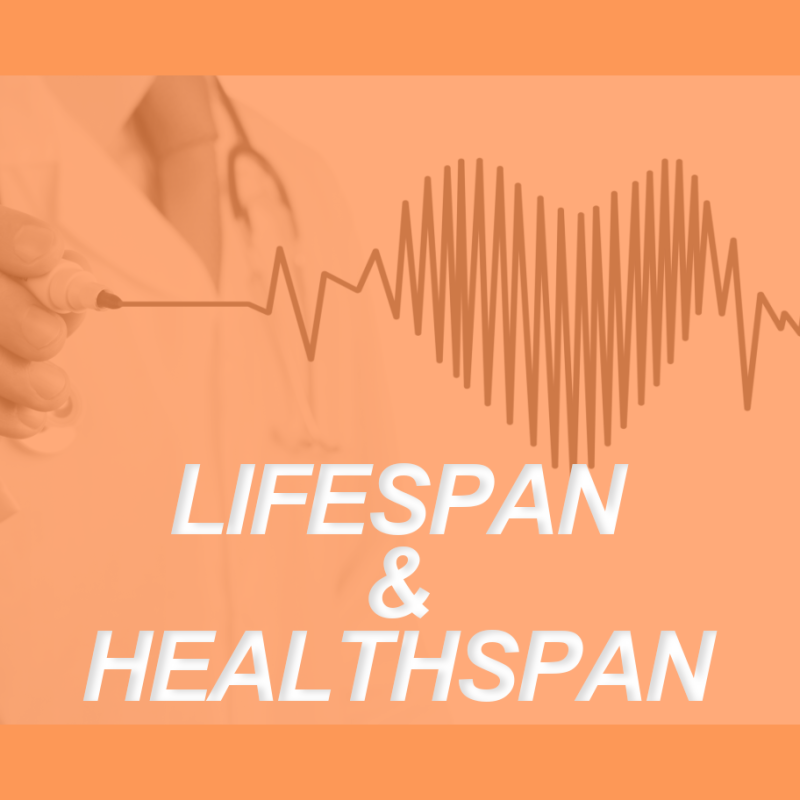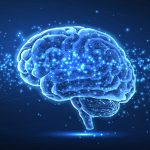
Each training client is a unique athlete with personal aspirations and achievements. It is thus fitting to address each client’s view on lifespan vis a vis healthspan.
- Getting “older” relates to lifespan as a period of existence.
- The avoidance of getting “old” is related to one’s healthspan.
These terms intersect though they are not interchangeable. Lifespan (literally the time from one’s birth to death) has been in longevity conversations since the mid-1800s. Conversely, healthspan emerged in 1990’s conversations to shape illness prevention/wellness efforts and to depict integrative steps to gain qualitative “good living” in one’s existence. Or, as Harvard researcher David A. Sinclair asserts in his best-selling book,
“It does not matter if we can extend lifespans if we cannot extend healthspans to an equal extent.” 1
The following offers recent government statistics for adult morbidity which fitness and lifestyle can and should impact favorably. It then offers specific P-T enablers for both the lifespan and healthspan of clients. An overview of emerging results for geroprotection2 are offered before summary statements are made.
Ends of Life(span)
America’s top three causes of death for 2021 have underlying healthspan considerations. COVID-19 was a clear contributor to rising American mortalities in 2021, reported third as a cause of death. Cancer, with its notable percentage of preventable diseases (smoking, sun, inflammatory diet) ranked second with 600,000 deaths. Cardiovascular Diseases (CVD) were again the leading causes of American mortality with almost 700,000 deaths in 2021, which equates to a CVD death every 1.3 minutes.
Fact: Folks who contracted COVID-19 were statistically less likely to be hospitalized or die if they had strong grip strengths measured for their age and gender.
Fact: Top contributors to cancer’s onset and death in America are preventable.
Eighteen percent of all cancers diagnosed in the US are related to body fatness, physical inactivity, alcohol consumption, and/or poor nutrition, and thus could be prevented.” 3. The good news is that something can be done about this.
Fact: Both aerobic exercise (an accumulation of 150 minutes per week) and strength training sessions (twice per week) “produce the greatest benefit for preventing and managing heart disease.”4
Old yet Thriving
Geroscience Magazine offers what may be called the Betty White phenomenon of one’s old yet thriving healthspan:
“the period of life spent in good health, free from the chronic diseases and disabilities of aging.” 5
Statistics suggest that the mean average American healthspan was 63 years in 2019. More recent healthspan numbers are not yet available. This healthy number 63, coupled with the average age of Americans’ deaths (77) in 2020, suggests that an aging American may be beyond her or his “thriving” healthspan for 14 or more years. The magnitude of those non-healthspan years is quite staggering for our American sick care system and palliative care network. Extending both human healthspan and lifespan should matter.
Yes, professional trainers can help.
“You can’t help getting older but you don’t have to get old.”
Centenarian comic George Burns
Healthspan Hacks
A client’s years without debilitating conditions or diseases can be better assured with long-term focus on both stamina and strength activities done regularly.
- “You’re never too old to start something new.” As neuroscientist Daniel Levitin offered, sedentary elders, aged 60 to 72, increased their strength and muscle mass “significantly” with 12 weeks of strength training sessions. 6
- Interval sessions are efficient and effective ways to promote both stamina and strength for aging adult clients. Exercise-induced stress and sweat seem to be key to generating positive cytokine flows as noted by geneticist David A. Sinclair.1
- Like exercise-induced stress, intermittent fasting increases our level of longevity-controlling enzymes, called sirtuins that may protect our cells against disease and deterioration. An intermittent fast should last about 14 hours to stress our human sense-and-respond system. Can our glucose management and longevity enzyme levels benefit from technology’s discoveries and testing?
Geroprotection
Certain natural and man-made compounds may serve humans as “vitality molecules” that reduce cellular noises that build up to influence aging.1
Two respected scientists established a professional bet in 2000 about future human longevity. This futuristic wager asked if someone alive in 2000 could live to the year 2150 when she or he would reach the age of 150.6
- Scientist Jay Olshansky asserted that our genetic code had natural limits as evidenced by the documented lifespans of the world’s oldest people. Exceedingly rare human longevities of 117-122 years from birth to death have been publicized.
- Scientist Stephen Austad cited impressive research on natural compounds and man-made synthetic drugs that may safely slow the human body’s aging processes, as they have done for simpler organisms like fruit flies and for small mammals like mice.
Your clients may be aware of or may already ingest one or more of these four potential down-aging compounds (listed below). These brief descriptions include caveats that long haul science has just begun for human trials. What chemically and genetically works for gero-protected mice may not practically work to extend life and health for us human beings. Other geroprotection molecules may be found, tested and applied in years ahead.
- Resveratrol. As an antioxidant found in currants, peanuts and red grape skins, this compound can possibly reduce our cellular damage. It is not known if humans can benefit from Resveratrol, or how much is needed to boost one’s longevity. Side effects of use, if any, are to be determined.
- Rapamycin. Fortuitously discovered in Easter Island soil in 1972, Rapamycin has been successfully used to support human organ transplants and stent insertions. In fruit flies and mice, Rapamycin seems to promote longevity by stabilizing intracellular DNA strands. No double-blind tests of scientific rigor have been done for humans. This powerful compound may generate dangerous side effects when used.
- Metformin. This medicinal drug was approved by our FDA to treat diabetes in 1995. According to Harvard Health.citation [7] Metformin may help an adult lose weight plus make life easier and longer for Type 2 diabetics.
- NMN (Nicotinamide mononucleotide). This prospective lifespan and healthspan extender is made by our bodies, though its production decreases with age. NMN is a natural compound found in avocados, broccoli, and cabbage and is an intermediate to NAD. In credible mice studies, NMN “can protect against kidney damage, neurodegeneration, mitochondrial diseases…NMN turned the aging test mice into the equivalent of contenders on American Ninja Warrior.”1
Here’s to Good Health and Long Healthspans
Sadly, average lifespans in America have decreased in recent years. It is evident that population healthspans also decreased since COVID-19 spread in American and globally. With knowledge and persistence, professional trainers can influence both spans of their clients.
- As stated in an earlier post about Training for Longevity, “our training protocol should always strive to keep us as healthy and fit as possible but should also reflect our goals and help us do the things we like to do, better.”
Some may view this subjective comparison of lifespan and healthspan in terms of fitness years versus calendar years – or “doing the things we like to do better, for longer.” Others may comparatively gauge this longevity and health relationship in a tiered comparison of decent, good, and great performance at fitness benchmark tests.
Either way, individual considerations of both healthspan and lifespan will aid in the planning and execution of a client’s successful P-T program. Exercise-induced stress is a key to slowing our human aging process, even if a vitality molecule like resveratrol, rapamycin, metformin, or NMN can’t reverse our clocks of aging.
References
- Sinclair, D. and LaPlante, M., 2019. Lifespan. Atrium Books.
- Kalra S, Batra P, Bijayini J. Qualitative research in midlife health. J Midlife Health. 2013 Jul;4(3):198-9. doi: 10.4103/0976-7800.118993. PMID: 24672196; PMCID: PMC3952415.
- https://www.cancer.org/healthy/cancer-causes/diet-physical-activity/diet-and-physical-activity.html Diet and Physical Activity: What’s the Cancer Connection?
- https://www.hopkinsmedicine.org/health/wellness-and-prevention/exercise-and-the-heart Exercise and the Heart | Johns Hopkins Medicine
- Kaeberlein, M. How healthy is the healthspan concept? Geroscience. 2018 Aug;40(4):361-364. doi: 10.1007/s11357-018-0036-9. Epub 2018 Aug 6.
- Levitin, Daniel J. 2020. Successful Aging. Dutton.
- Fleming, N. Scientists up stakes in bet on whether humans will live to 150. Nature (2016). https://doi.org/10.1038/nature.2016.20818
- https://www.health.harvard.edu/blog/is-metformin-a-wonder-drug-202109222605 Is metformin a wonder drug? – Harvard Health







